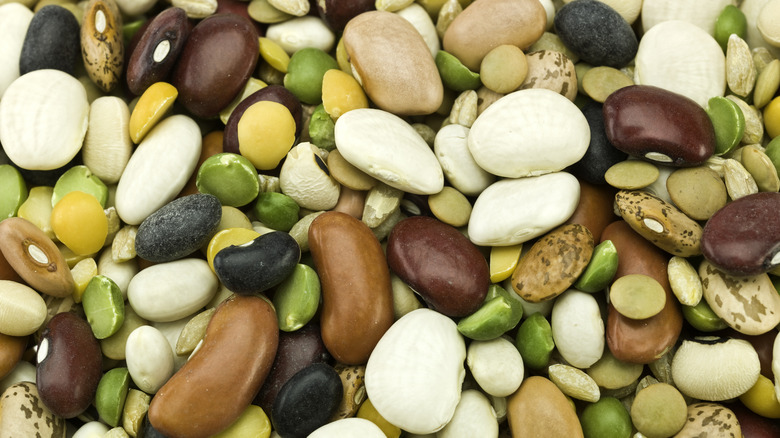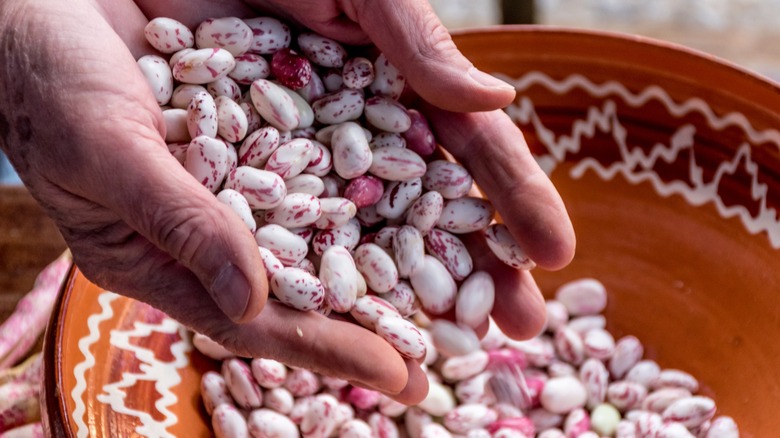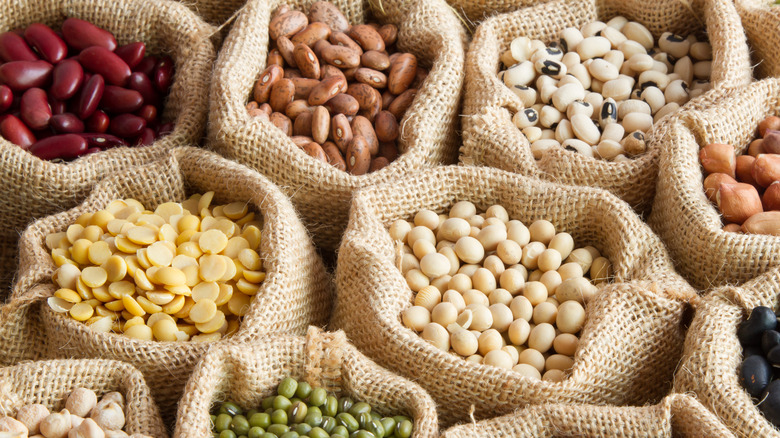What's The Difference Between Heirloom Beans And Regular Ones?
If you've watched a cooking show or YouTube video in the last decade, chances are you've heard of the concept of "heirloom" varieties of various foods, though you might have wondered what that term means. Simply put, an heirloom variety of a food is an older version with a long history (definitions of how long vary, though 1951 is often used as the dividing line) and that wasn't subject to more recent hybridization and genetic manipulation. Though you'll see the term pop up for all kinds of food (heirloom eggs, anyone?), the most common one you'll see described this way are heirloom tomatoes.
But there are also plenty of fruits and vegetables with heirloom varieties — including beans. And while that history may define what an heirloom bean is, the difference between heirloom beans and their non-heirloom counterparts isn't simply "one is an older variety." They're visually distinct, sure, but according to some in the culinary world, heirloom beans taste better, too. Of course, this reputation means that they're also going to come in at a higher price point, so there are always trade-offs.
Heirloom beans are often prettier and more expensive
The most common beans you've seen in grocery stores are unlikely to be heirloom varieties. While there are literally tens of thousands of bean varieties on the planet, not many are universal enough for mass production. Since these are (like any broadly-available product) designed to be cranked out in maximum amounts for maximum profit, they're likely to be hybridized for greater yield — meaning these "regular" beans are by definition not heirloom. You can often tell the difference by sight: Visually, heirloom beans are likely to be distinct.
Though beans come in many varieties with a range of visual patterns and colors, because so few are mass-produced, if you see a bean that looks noticeably different from the others you're used to, they're more likely to be heirloom. It's far easier to find heirloom beans than it once was, particularly as companies like Rancho Gordo spring up to serve the market of customers longing for gourmet beans. This does mean heirloom beans have a significant cost increase, though, often coming in at several times the price of your standard bag of beans — a function of their more small-batch production.
Many cooks believe heirloom beans taste better
Still, for a lot of cooks, that increased price is well worth it. Heirloom beans are likely to be fresher than regular dried beans, meaning they not only cook faster, but also tend to have more full flavors as well as richer, creamier, and firmer textures. There is some science to relate the heirloom beans' visual appearance to this increased flavor, too, as the same genes that control the vibrant colors of heirloom beans are the ones that control flavor. It's not just greater intensity to flavors you're used to, either.
Because the beans come in so many varieties, there's also naturally a broader range of flavors available than most consumers would be used to tasting with standard commodity beans. None of this is to say that the beans you're used to are bad; there are plenty of ways to use canned beans. But though heirloom beans may be pricier than the plain old beans you're familiar with, there are certainly reasons to consider giving them a shot. With increased flavor, better texture, and a lovely appearance, they're certainly likely to make an impression.


